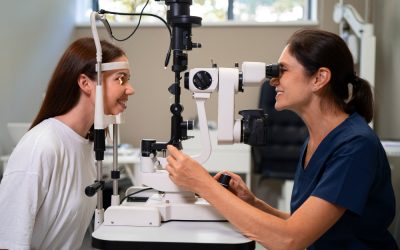Understanding Dacryocystorhinostomy

Dacryocystorhinostomy might sound like a big, scary word, but it’s easier to understand than you think. At its core, it’s a surgical procedure meant to help people with blocked tear ducts. These blockages can cause tears to overflow because they can’t drain properly. With this surgery, doctors create a new path for your tears to flow from your eyes to your nose. This is super important for anyone with persistent tear duct issues, as it brings relief and restores normal tear flow. Understanding the basics of this surgery helps demystify its purpose and highlights its importance in eye health.
The Tear Drainage System Explained
Our eyes are designed to keep themselves moist and clear with a smart tear drainage system. Tears naturally flow over your eye’s surface and into small openings at the inner corners. These passages lead to the tear duct, which further drains into your nose. Sometimes, things like infections, age, or inflammation block this path, leading to uncomfortable symptoms.
Here’s what can happen: – Tears overflow and might run down your cheek. – Irritated eyes due to constant moisture. – Occasional blurred vision and mild pain.
If you experience these issues, a dacryocystorhinostomy procedure might be suggested by your doctor. This surgery helps restore the regular tear flow and ease these symptoms, letting your eyes feel comfortable again.
Exploring the Dacryocystorhinostomy Procedure
The dacryocystorhinostomy procedure is a surgical way to bypass a blocked tear duct, allowing tears to drain properly once again. Imagine having traffic on your tear highway, causing backups; this method helps clear the way.
Dacryocystorhinostomy surgery can be done in two main ways: 1. External approach: Involves making a small skin cut to access the tear duct. 2. Endoscopic approach: A tiny camera helps guide the surgery internally, without skin incisions.
Both methods aim at the same goal: getting your tears to flow like they should. It’s about restoring balance and comfort so your eyes can naturally stay clear and healthy.
Preparing for Dacryocystorhinostomy Surgery
Before jumping into dacryocystorhinostomy surgery, there’s prep work to be done. It starts with a thorough evaluation by your doctor to determine if surgery is necessary. You might undergo specific tests to assess the exact blockage causes. Proper preparations ensure a smooth procedure and recovery.
Here’s what patients typically need to do: – Follow fasting instructions before surgery to avoid complications while under anesthesia. – Discuss anesthesia options with your doctor—local or general anesthesia might be used.
A little planning goes a long way in making sure you’re ready for a successful outcome and recovery.
Step-by-Step Guide: Conducting the DCR
Once you’re prepped, it’s time for the dacryocystorhinostomy procedure. The process happens step-by-step to ensure everything gets done right.
- Anesthesia Administration: The doctor gives you anesthesia to ensure comfort.
- Patient Positioning: Proper positioning is crucial for accessing the tear duct area.
- Surgical Approach:
- External DCR: A small cut is made near the nose to reach the tear duct.
- Endoscopic DCR: A camera and instruments slide into the nasal passage, avoiding skin incisions.
- Exposure and Drainage Passage:
- The surgeon carefully exposes the lacrimal sac, where your tears should drain.
- A new passage is created to connect the sac directly to the nasal cavity.
- Silicone Stents or Tubes: They might place these stents to keep the new passage open.
- Closing: Finally, the area is stitched or sealed, wrapping up the procedure.
Following this structured approach helps you achieve the best outcome, minimizing risks and ensuring the new tear passage works effectively.
Post-Surgery Care and Recovery Guide
After you’ve had the dacryocystorhinostomy surgery, there are a few important steps to follow to ensure a smooth recovery. Right away, you might notice some swelling or bruising around the surgery area; this is normal, and your doctor will guide you on how to manage these temporary effects.
Here’s a quick guide to what happens next: – Recovery Timeline: Most people get back to their regular activities within a few weeks. – Care Instructions: You’ll need to keep the surgery area clean, avoid rubbing your eyes, and follow other specific care guidelines provided by your doctor. – Follow-Up Visits: Attending scheduled follow-ups is crucial to ensure everything is healing as it should.
These steps are pivotal in preventing complications and ensuring the surgery’s success.
Potential Risks and Complications
Like any procedure, dacryocystorhinostomy surgery has its risks. Common minor risks are bruising or a slight infection. However, serious complications are rare. Keep an eye out for increased swelling, redness, or discharge. Immediate consultation with your doctor can address issues early, ensuring a smooth recovery and optimal results.
Long-term Outlook and Success Rates
The outlook after undergoing a dacryocystorhinostomy procedure is mostly positive. Success rates are high, with many patients experiencing significant relief from their symptoms. Tear function returns to normal, enhancing quality of life and eyesight comfort. Long-term success depends on proper monitoring and attending follow-up visits to ensure the passage remains open and healthy.
Conclusion
In simple terms, dacryocystorhinostomy is a vital surgery for anyone suffering from blocked tear ducts. It effectively restores normal tear drainage, boosting comfort and eye health. Seeking advice from an eye specialist ensures you receive appropriate and personalized care, tailored to your needs.
Making informed decisions about your eye care ensures you maintain healthy and happy eyes.
Don’t let watery eyes hold you back—Book your DCR consultation at Global Eye Hospital today!


